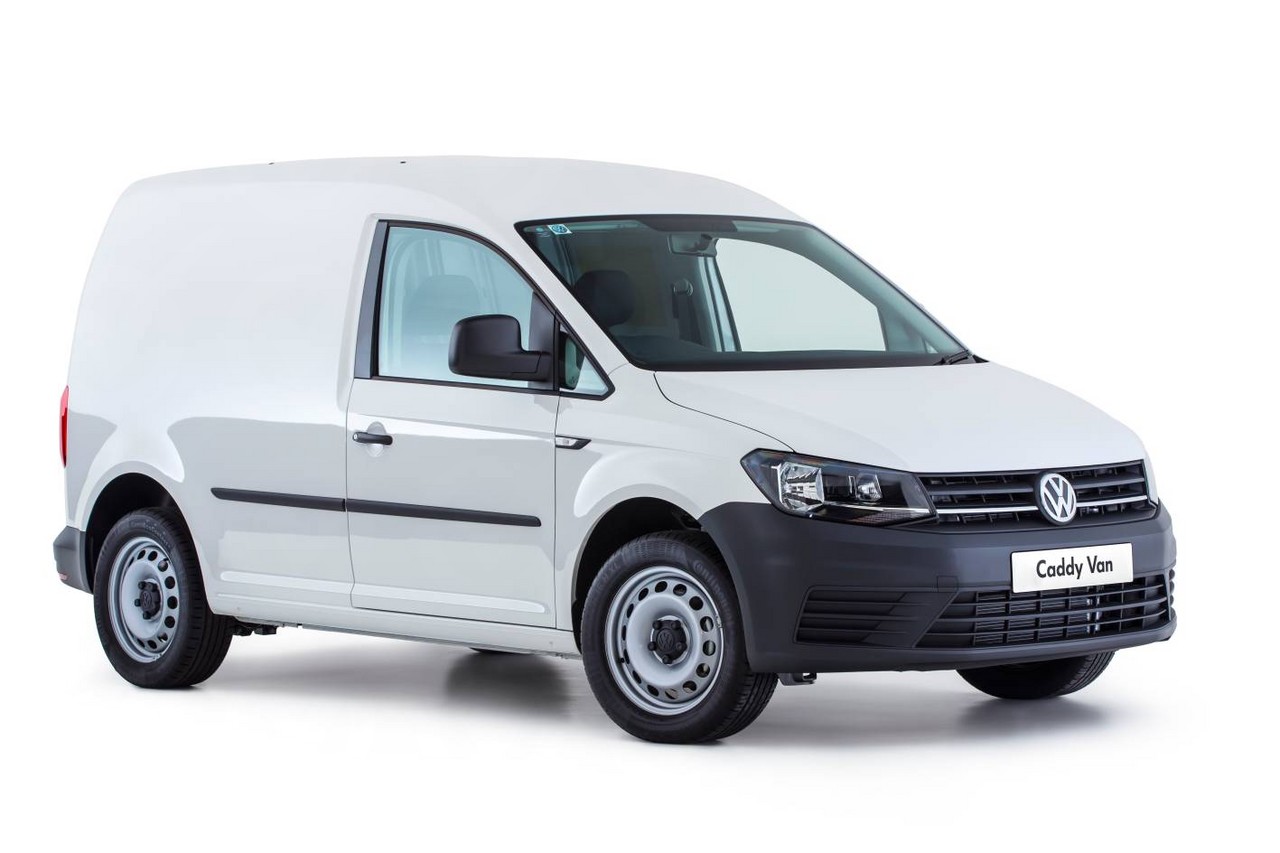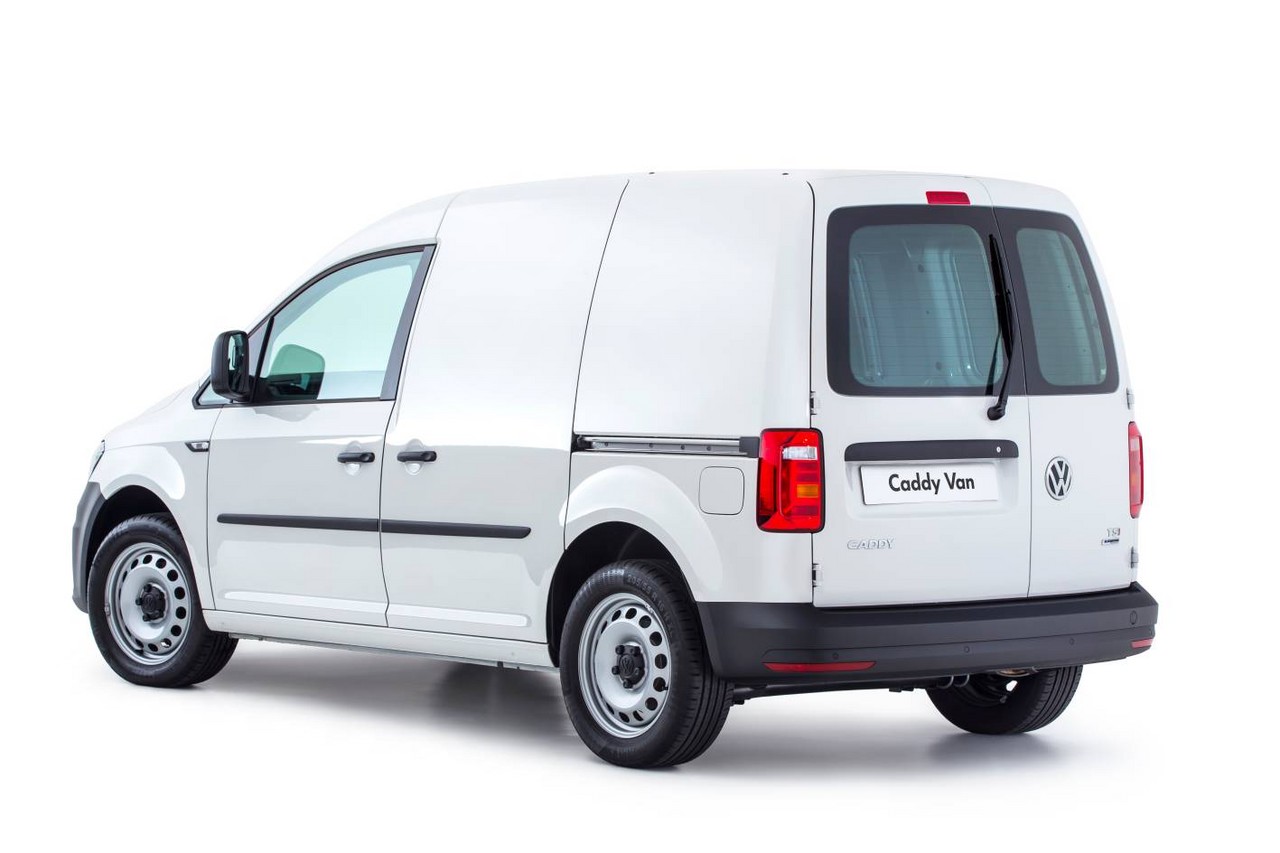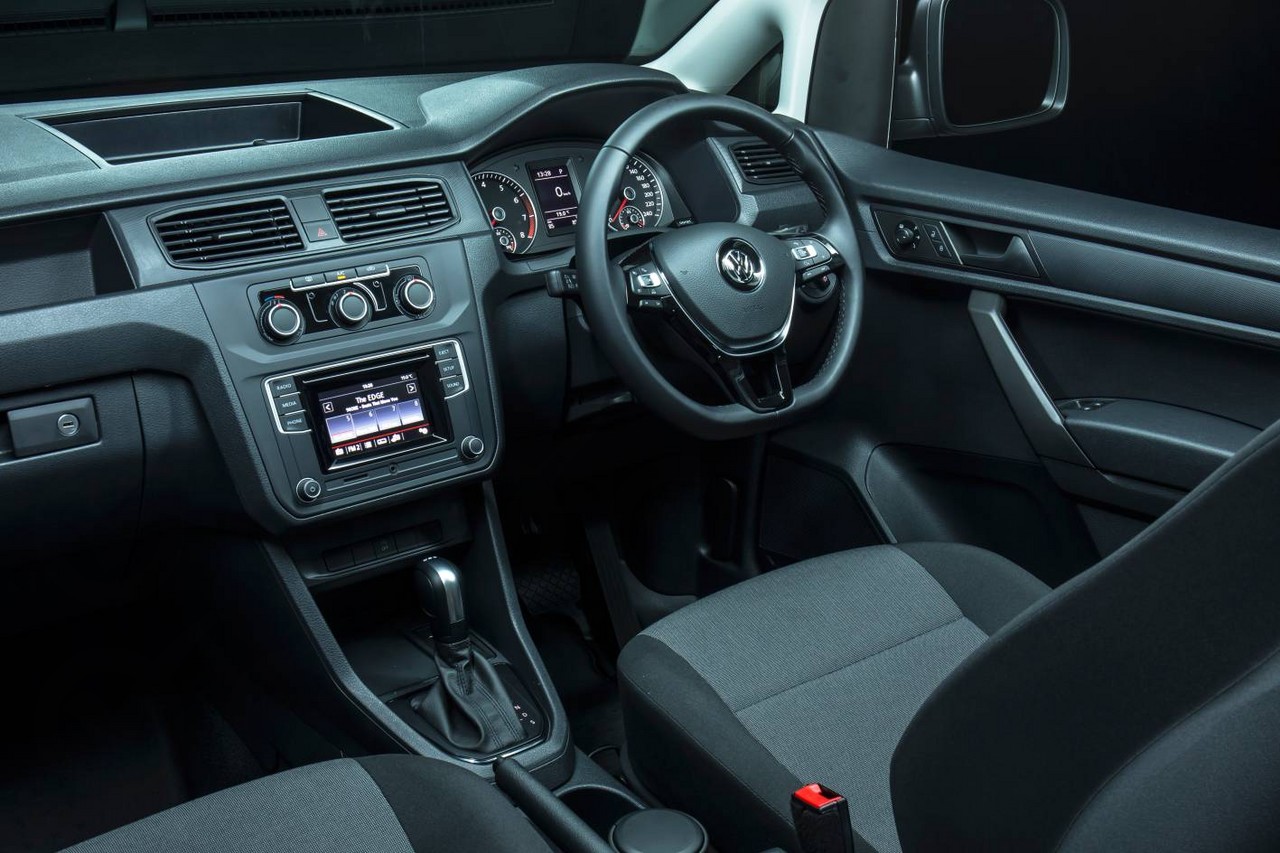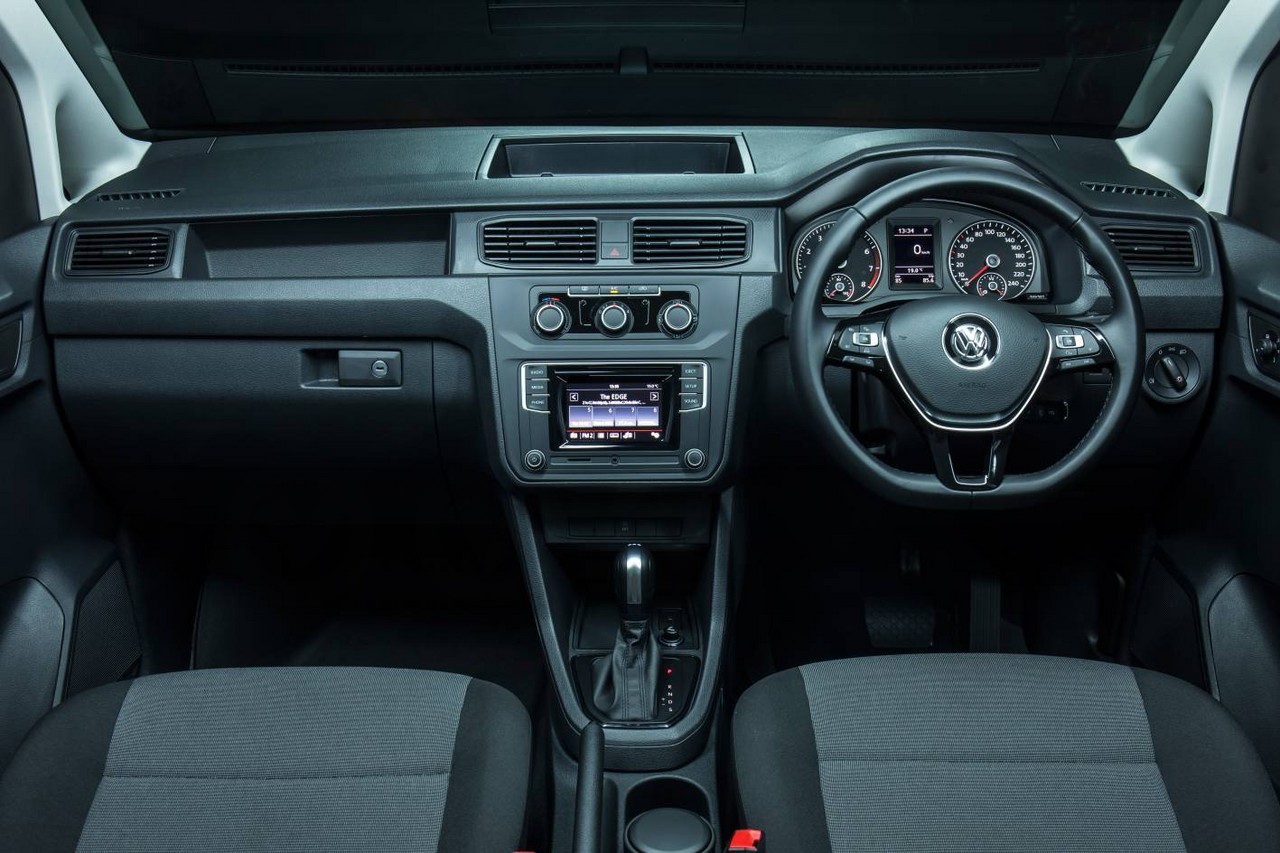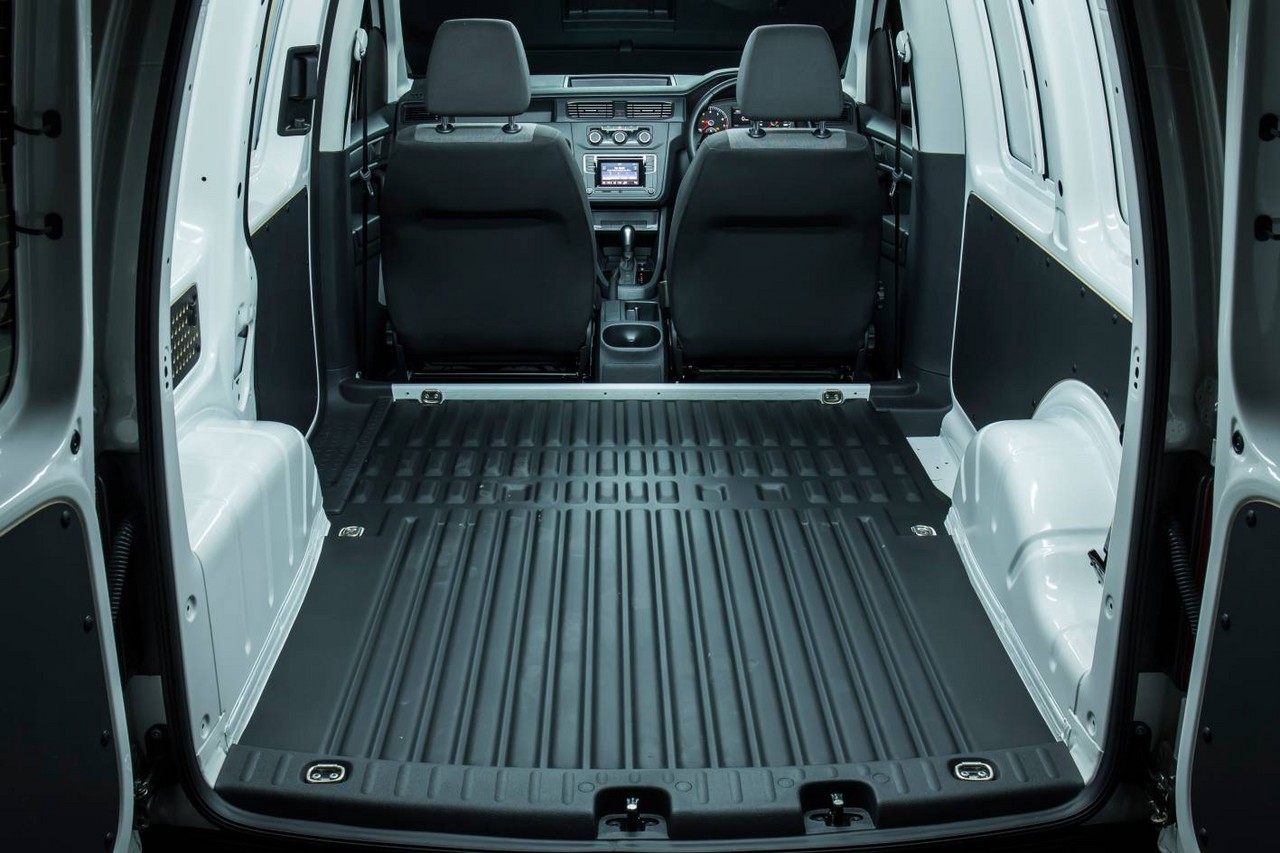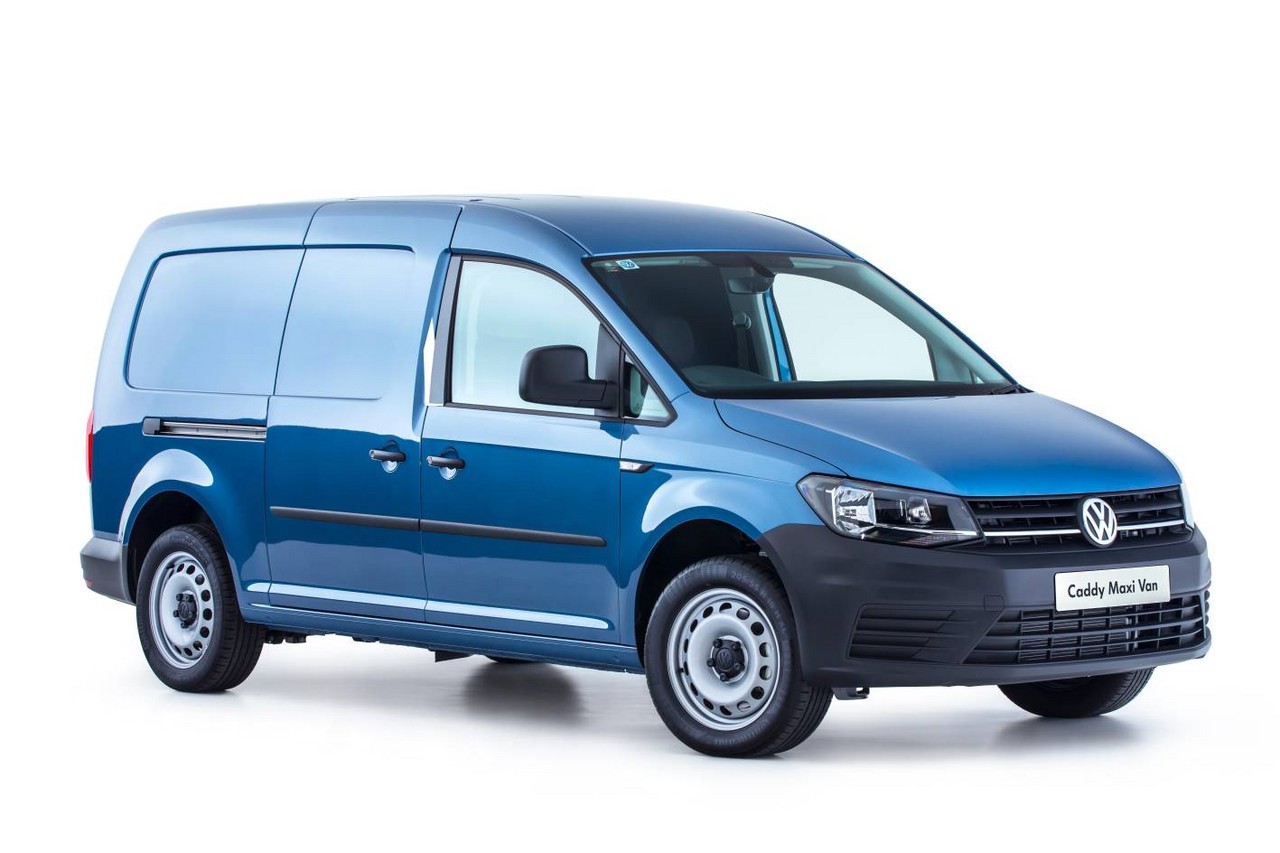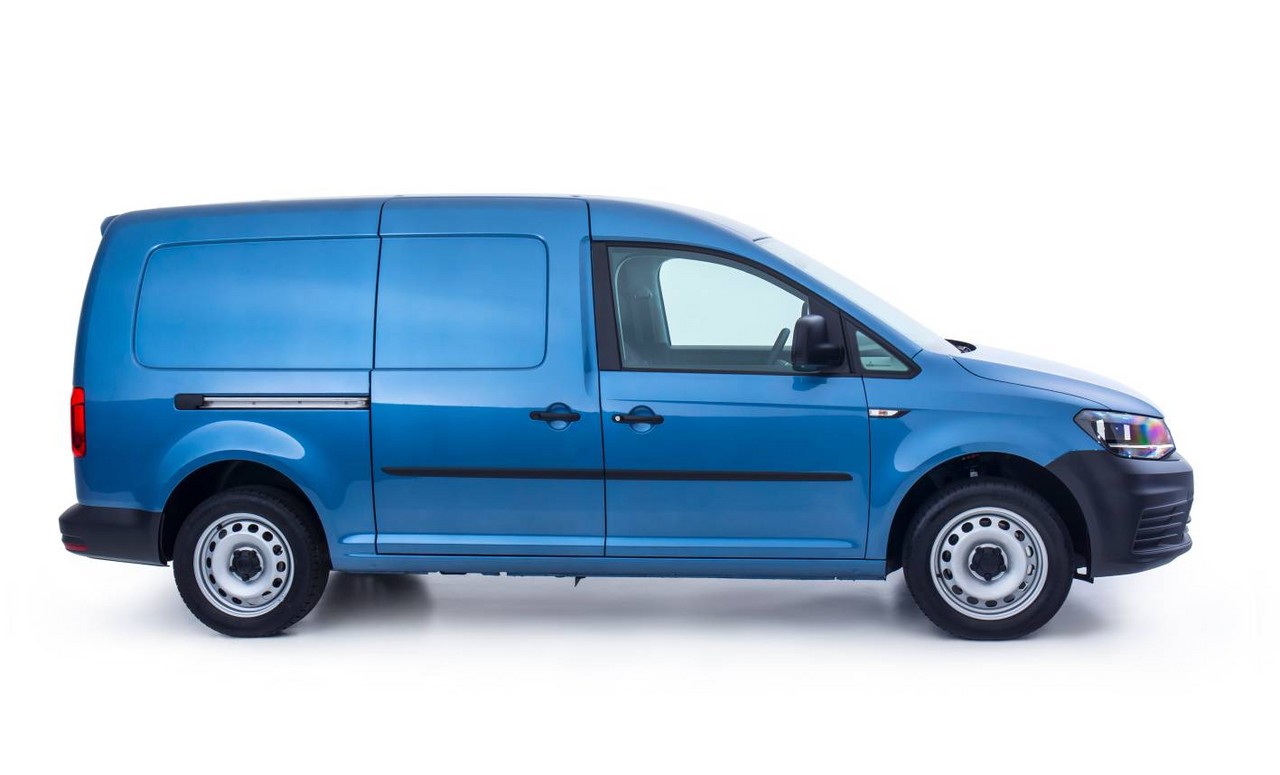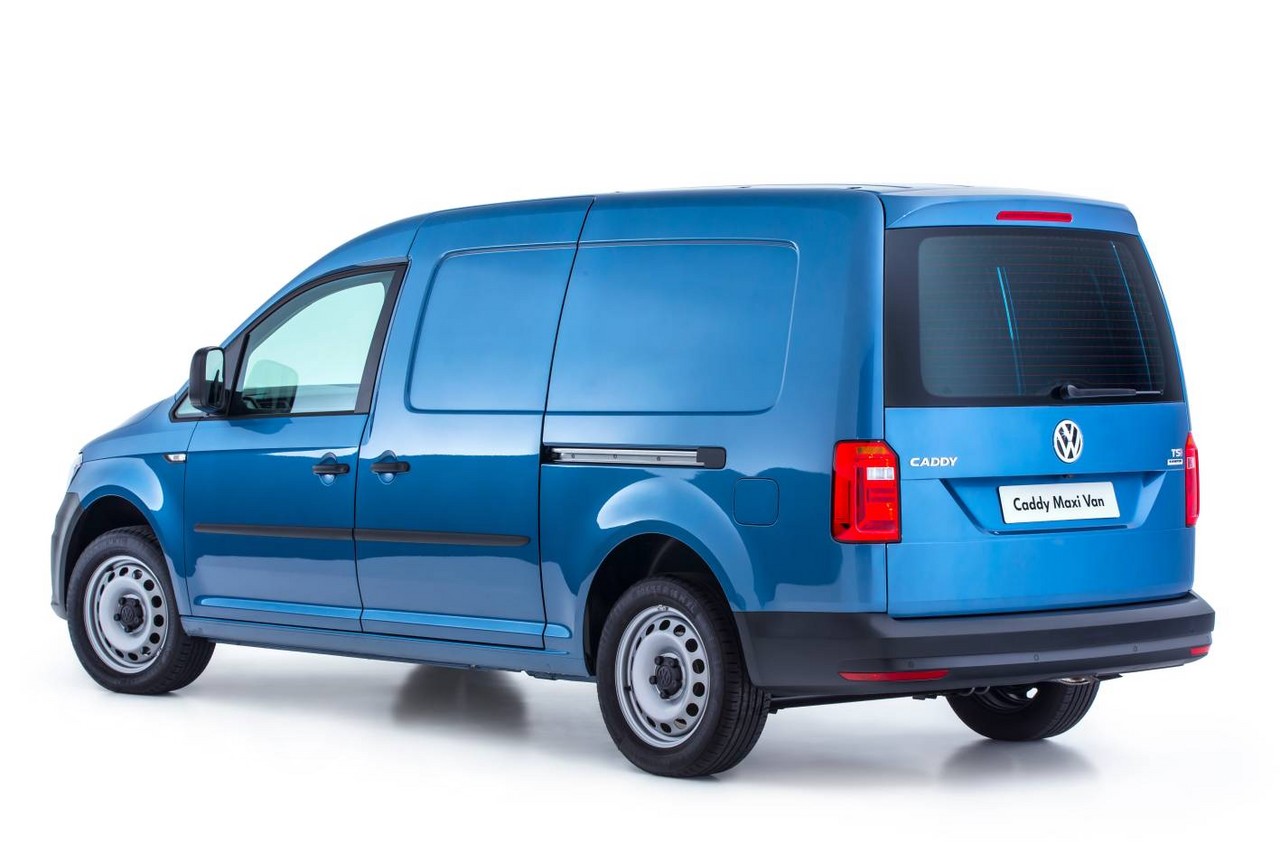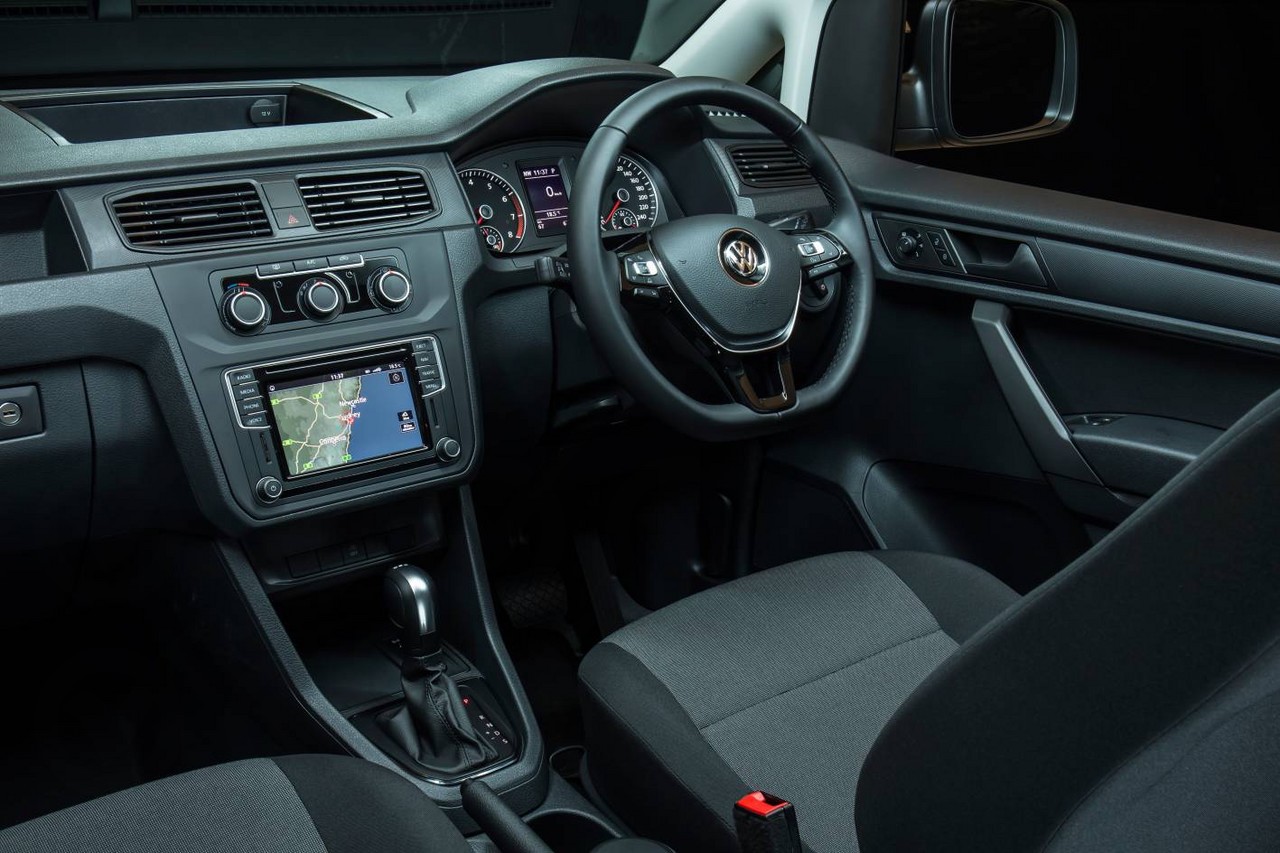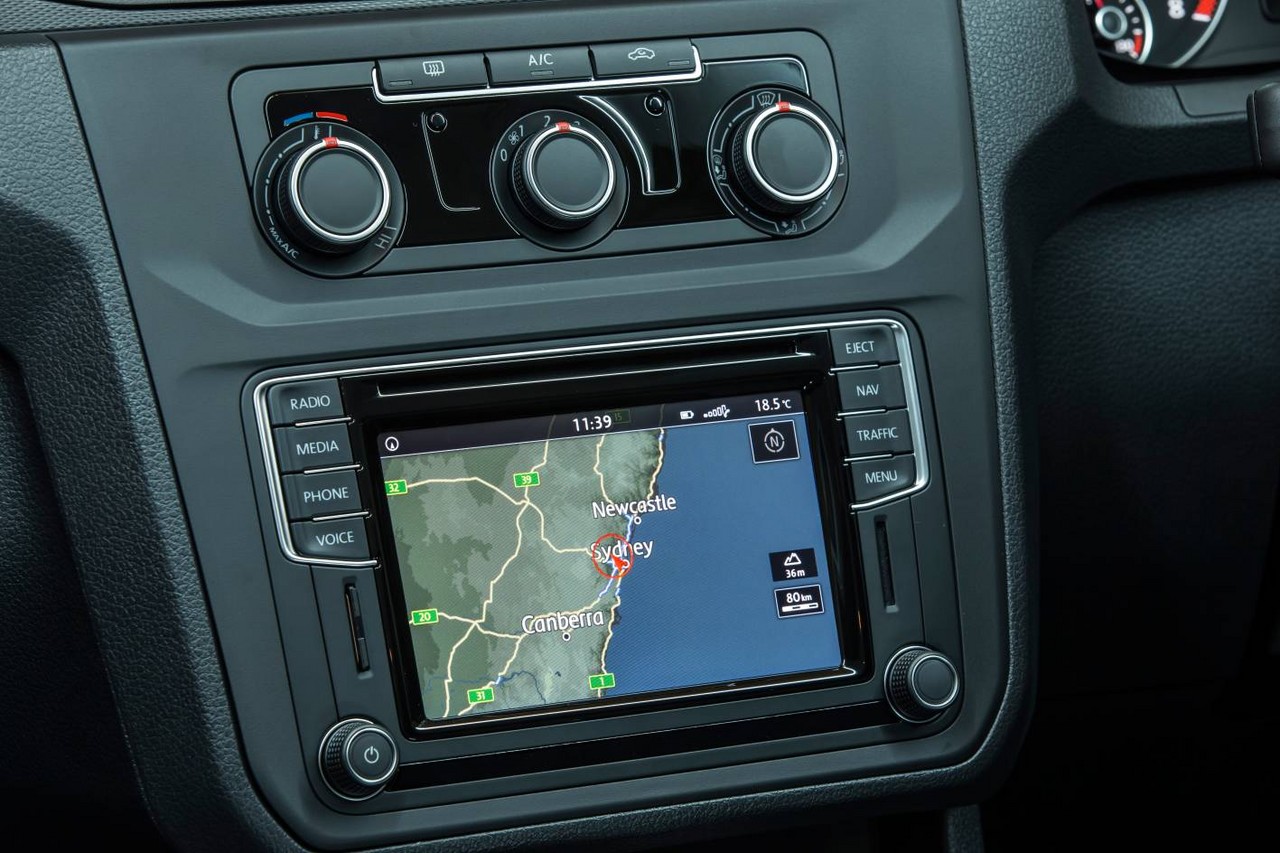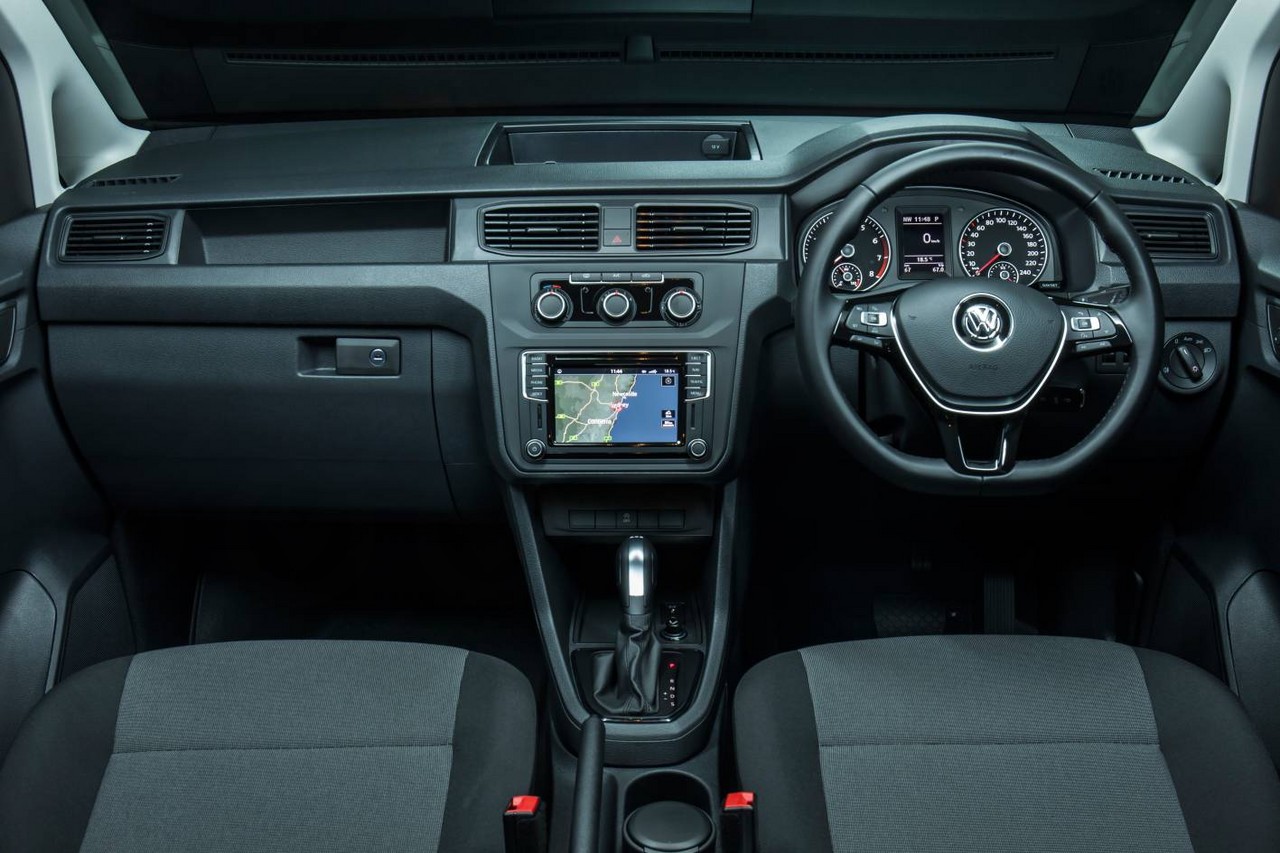
- DSG provides fast gearshifts
- Generally comfortable ride…
- … but live rear axle suspension lacks compliance over uneven surface
- Cabin lacks sound insulation
- TSI220 engine struggles when laden
Overview
Released in Australia in December 2015, the Volkswagen Mk.4 Caddy Van was available in standard, long wheelbase (Caddy Maxi) and five-seat (Caddy Maxi Crew) models. Manufactured in Poznan, Poland, the front-wheel drive Volkswagen Mk.4 Caddy was initially powered by a 1.4-litre turbocharged petrol engine (‘TSI220’) which had a Stop/Start function that enabled the engine to shut down when the vehicle was stationary in traffic. From 2016, the Volkswagen Caddy is expected to be offered with diesel engines.
Although described by Volkswagen as its ‘fourth generation’ Caddy, the Mk.4 Caddy Van was underpinned by the same platform as the 2K Caddy Van which preceded it.
| Variant | Engine | Trans. | Peak power | Peak torque | |
|---|---|---|---|---|---|
| Caddy | TSI220 | 1.4-litre turbo petrol I4 | 7sp DCT | 92 kW at 4800 rpm | 220 Nm at 1500-3500 rpm |
| Caddy Maxi | TSI220 | 1.4-litre turbo petrol I4 | 6sp man., 7sp DCT |
92 kW at 4800 rpm | 220 Nm at 1500-3500 rpm |
| Caddy Maxi Crew | TSI220 | 1.4-litre turbo petrol I4 | 6sp man., 7sp DCT |
92 kW at 4800 rpm | 220 Nm at 1500-3500 rpm |
| Caddy TSI220 | Caddy Maxi TSI220 | Caddy Maxi Crew TSI220 | |
|---|---|---|---|
| Payload (manual/DCT) | 773 kg | 847/841 kg | 733/726 kg |
| Length | 4408 mm | 4878 mm | 4878 mm |
| Width | 1773 mm | 1793 mm | 1793 mm |
| Wheelbase | 2682 mm | 3006 mm | 3006 mm |
| Height | 1836 mm | 1836 mm | 1831 mm |
| Ground clearance | 172 mm | 187 mm | 187 mm |
| Turning circle | 11.1 m | 12.2 m | 12.2 m |
| Load compartment width (max/wheel arches) | 1566/1170 mm | 1532/1168 mm | 1190/1168 mm |
| Load compartment height | 1244 mm | 1259 mm | 1134 mm |
| Load sill height | 577 mm | 588 mm | 581 mm |
Body and interior
The Volkswagen Caddy had a sliding door on the left side of the body which had an opening width of 700 mm. While a right side sliding door was an extra-cost option for the standard wheelbase Caddy, it was standard for the Caddy Maxi and Maxi Crew. Inside, the Caddy was fitted with load-lashing rings so that cargo could be secured with tensioned straps.
The Volkswagen Caddy’s asymmetrically split rear wing doors had an opening angle of 90 degrees with the door latches engaged and 180 degrees without. A lifting tailgate was available as an extra-cost option.
For the Caddy Maxi Crewvan, up to three people could sit on the rear bench seats and the right-hand seat on this row was separate such that it could be tipped up and/or folded up and removed. While the Caddy and Caddy Maxi did not have side windows as standard, the Maxi Crewvan had opening (sliding) windows in the sliding doors.
Suspension and steering
The Volkswagen Caddy had MacPherson strut front suspension with double wishbones and an anti-roll bar. At the rear, the live rear axle was suspended by leaf springs with load-dependent dampers and an anti-roll bar.
The Volkswagen Caddy had electromechanical power-assisted rack and pinion steering.
Safety equipment
Standard safety for the Volkswagen Caddy Van included dual front airbags, combined side/head airbags for front occupants, curtain airbags, for second row occupants, ABS, electronic brake force distribution, brake assist, electronic stability control, traction control and front seatbelt pretensioners. For the Caddy Maxi Crew, the outer second row seats also had seatbelt pretensioners.
As standard, the Volkswagen Caddy was also fitted with:
- Multi-collision brake (MCB): multi-collision brake is activated when two independent sensors detect that a collision has occurred and the driver does not respond. Multi-collision brake applies the brakes to achieve controlled deceleration to a speed of 10 km/h to minimise the risk of the vehicle being involved in secondary collisions; and,
- Driver Alert (Fatigue Detection System): operates at speeds above 65 km/h and monitors driver inputs such as steering behaviour for signs of fatigue. If detected, an audible and visual alert is issued which recommends that the driver take a break.
From October 2016, the Caddy Van was fitted with Forward Collision Warning and City Emergency Braking as standard; these systems are explained below.
Optional Driver Assistance Package
As an extra-cost option, the Volkswagen Caddy Van was available with a ‘Driver Assistance’ Package which included:
- Adaptive Cruise Control (ACC) with ‘stop & go’ function: used a radar sensor to maintain a pre-set distance to the vehicle ahead (including accelerating and braking). Furthermore, the stop & go function enabled the Caddy Van to accelerate to its pre-set speed after coming to rest;
- Front Assist: monitored the distance to the distance to the vehicle ahead and, if that distance closed rapidly, provided visual and audible warnings, while the braking system was primed for fast response. If the driver did not react, there was a single, short jolting application of the brakes. If the driver responded but does not apply sufficient braking pressure, ‘Front Assist’ increases braking pressure; and,
- City Emergency Braking (‘City EB’): operated at speeds under 30 km/h. If the driver failed to respond to an obstacle in front of the vehicle, City EB automatically applied the brakes to prevent or reduce the severity of any subsequent collision.
Beyond the items above, the Driver Assistance Package also included front fog lights with a static cornering function and a ‘Light and Vision’ package which included separate daytime running lights, automatic headlights, rain-sensing wipers, auto-dimming interior rear view mirror and, for the headlights, ‘Leaving Home’ and ‘Coming Home’ functions
Brakes
The Volkswagen Caddy Van had 312 mm ventilated front brake discs and 272 mm solid rear brake discs.
Euro NCAP crash testing
In Euro NCAP crash testing , a 2007 Volkswagen 2K Caddy Life – fitted with the 1.9-litre turbo-diesel engine and equipped with dual front and side airbags – received a four star adult occupant protection rating with a score of 27.46; in Australia, the fitment of a seatbelt reminder added an additional point. In the offset crash test, protection from serious chest and leg injury was marginal for the driver. In the side impact test, there was a one point deduction due to a door unlatching.
Features: Caddy Van
Standard features for the Volkswagen Caddy Van and Caddy Maxi Van included 16-inch steel wheels with 205/55 R16 94H tyres, Volkswagen’s ‘Composition Colour’ audio system with two speakers, a five-inch colour touch screen, CD player (MP3/WMA compatible), auxiliary inputs (3.5 mm/USB/SD card) and Bluetooth mobile phone connectivity and audio streaming, air conditioning, black ‘Austin’ cloth seat upholstery, cruise control with speed limiter, halogen headlights, daytime running lights, rear fog light, front reading lights, a leather covered steering wheel, remote central locking, power adjustable and heated mirrors, power windows, a height and tilt adjustable steering wheel, a height adjustable driver’s seat, a 12 volt power socket, roof rack mounting points, a trip computer and an immobiliser.
The Caddy Maxi Crew was further equipped with a height adjustable front passenger’s seat, drawers under the front seats, backrest release for the front seat, and a removable three seat rear bench with folding function.
Extended Electronic Differential Lock (XDL)
As standard, the Volkswagen Caddy Life was fitted with an ‘Extended Electronic Differential Lock’ (Volkswagen’s ‘XDL’). When cornering, the XDL responded to the unloading of the front inside wheel by applying the brakes to that wheel to prevent wheelspin and minimise understeer.
Paint finishes
The Volkswagen Mk.4 Caddy Life was available with the following paint finishes:
- Candy White;
- Cherry Red;
- Acapulco Blue Metallic;
- Bamboo Garden Green Metallic;
- Chestnut Brown Metallic;
- Honey Orange Metallic;
- Indium Grey Metallic;
- Reflect Silver Metallic;
- Starlight Blue Metallic; and,
- Deep Black Pearl.
Specifications
Related links
